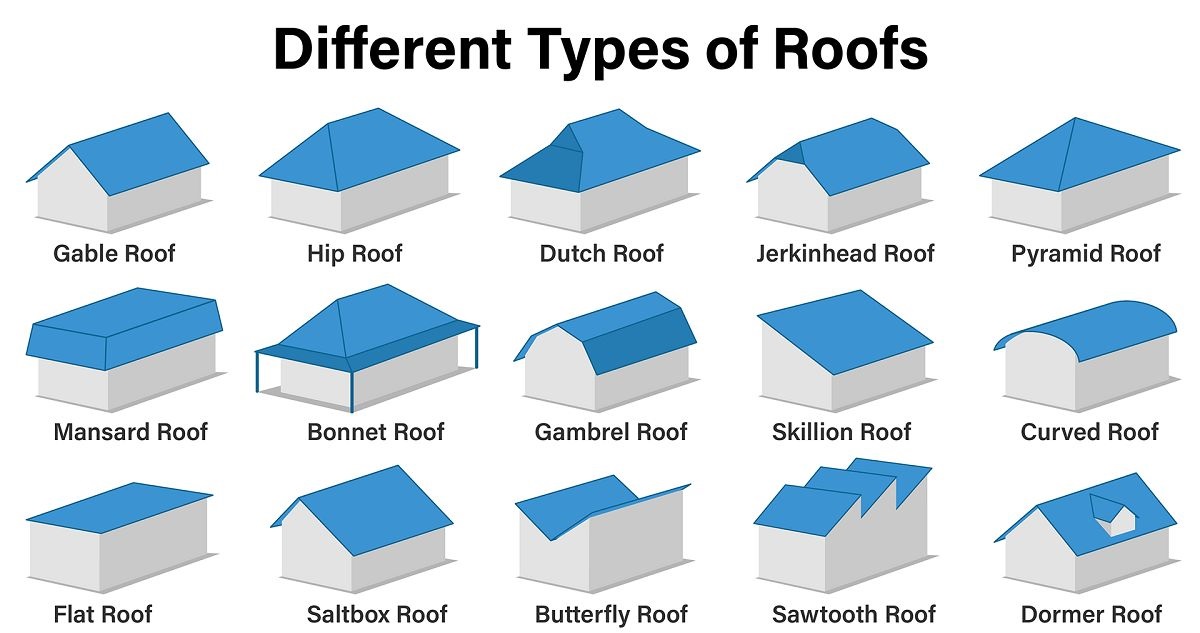What are the Different Types of Flat Top Roofs?
Welcome to the world of roofing possibilities! When it comes to flat-top roofs, the choices are abundant. In this article, we will delve into the diverse options available, each with its unique features and benefits. Whether you’re a homeowner planning a renovation or a builder seeking the ideal roofing solution, understanding the different types of flat-top roofs is essential. Let’s embark on a journey to uncover the beauty and functionality behind these installing roofing options.
Table of Contents
ToggleExploring Flat-Top Roof Varieties

Built-Up Roofing (BUR)
Built-up roofing, or BUR, stands as a classic choice for flat roofs. Comprising multiple layers of bitumen and reinforcing fabrics, BUR provides exceptional durability. Its robust structure makes it resistant to various weather conditions, ensuring its longevity.
Modified Bitumen Roofing
For a modern twist, consider Modified Bitumen Roofing. This type combines traditional BUR with added polymer modifiers, enhancing flexibility and strength. Modified Bitumen roofs are known for their resilience against extreme temperatures and UV rays.
EPDM (Ethylene Propylene Diene Monomer) Roofing

EPDM Roofing is a synthetic rubber membrane that offers a cost-effective and eco-friendly solution. This material is highly resistant to UV radiation, ozone, and weathering, making it an excellent choice for flat roofs.
TPO (Thermoplastic Olefin) Roofing
TPO roofing has gained popularity due to its energy efficiency and reflective properties. This single-ply roofing membrane is durable, lightweight, and resistant to punctures, making it a top choice for environmentally conscious builders.
PVC (Polyvinyl Chloride) Roofing
PVC roofing provides exceptional chemical resistance and durability. It is a popular choice for flat roofs in industrial and commercial settings. The heat-welded seams contribute to its watertight integrity, ensuring a secure and reliable roofing system.
Green Roofing

Embrace sustainability with green roofing, which incorporates vegetation into the roofing structure. Besides enhancing the aesthetic appeal, green roofs offer natural insulation, stormwater management, and contribute to environmental conservation.
Metal Roofing
Metal Roofing is a versatile option suitable for both residential and commercial applications. With various materials like aluminum, steel, and copper, metal roofs offer durability, energy efficiency, and a sleek appearance.
Foam Roofing
Foam Roofing provides a seamless and energy-efficient solution. Applied as a liquid, it expands and solidifies, creating a durable, insulating layer. This roofing type is lightweight, reducing structural stress, and exhibits excellent thermal resistance.
Solar Roofing
Combine sustainability and energy generation with Solar Roofing. Integrated solar panels transform sunlight into electricity, providing an eco-friendly and cost-effective solution for flat roofs.
Roll Roofing
Roll Roofing is a budget-friendly option suitable for small projects or temporary solutions. While not as durable as other types, it offers a quick and easy installation process, making it a practical choice for certain applications.
Fiberglass Roofing
Fiberglass Roofing boasts high strength and resistance to corrosion. This lightweight material is suitable for flat roofs and offers excellent UV resistance, ensuring a long-lasting roofing solution.
Monolithic Membrane Roofing
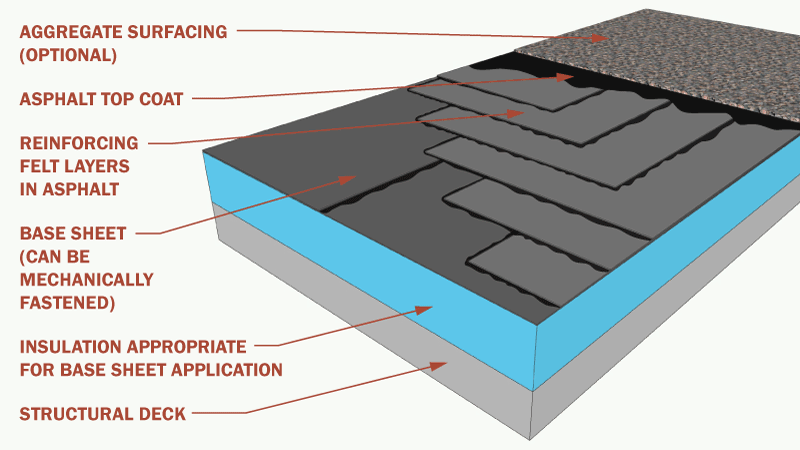
Monolithic Membrane Roofing features a single, continuous layer of elastomeric material, providing superior waterproofing. This seamless application minimizes the risk of leaks, making it an ideal choice for flat roofs.
Liquid Roofing
Liquid Roofing involves applying a liquid coating that solidifies to form a seamless, waterproof membrane. This versatile option can be applied to various surfaces, offering an efficient and durable flat roof solution.
Asphalt Roofing
Asphalt Roofing remains a popular choice due to its affordability and ease of installation. With multiple layers of asphalt-saturated felts, this roofing type ensures protection against water infiltration.
Rubber Roofing
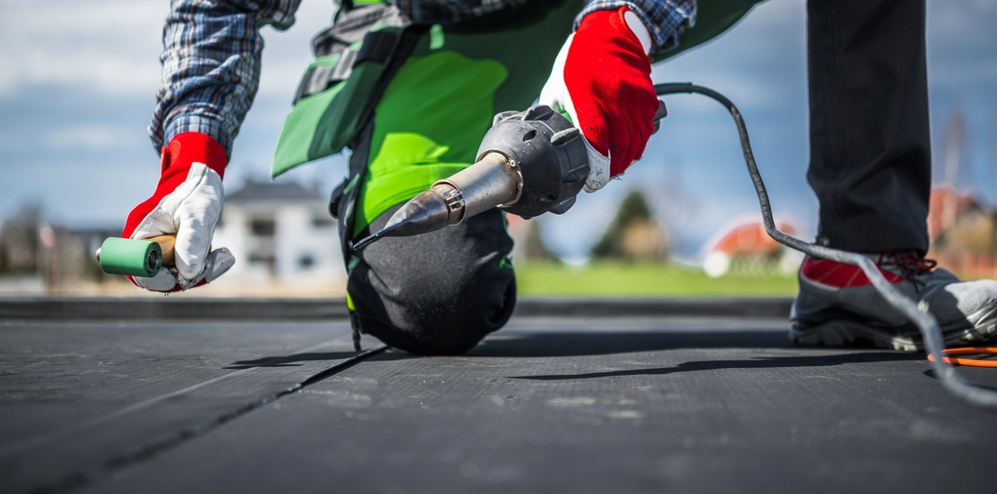
Rubber Roofing, typically made of ethylene propylene diene terpolymer (EPDM), provides flexibility and resistance to extreme weather conditions. Its easy installation and maintenance make it a practical choice for flat roofs.
What are the different types of flat-top roofs?
Choosing the right flat-top roof for your project is crucial. Each type comes with its unique set of advantages and considerations. Let’s explore the details of each roofing option, helping you make an informed decision for your specific needs.
Built-Up Roofing (BUR)
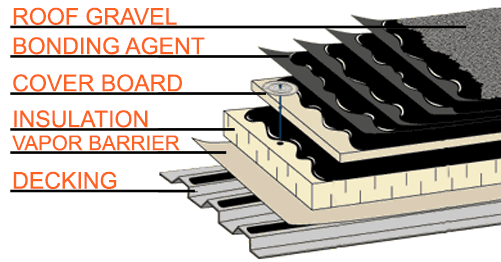
Built-up roofing, commonly known as BUR, has been a staple in the roofing industry for decades. This traditional method involves layering bitumen—a thick, black, sticky substance derived from crude oil – between plies of reinforcing fabric. The result is a robust and durable roof that can withstand various weather conditions.
Pros:
- Excellent durability and longevity.
- Resistant to UV rays and extreme weather.
- Provides a waterproof barrier.
Cons:
- Heavy and may require additional support.
- The installation process can be labor-intensive.
Modified Bitumen Roofing
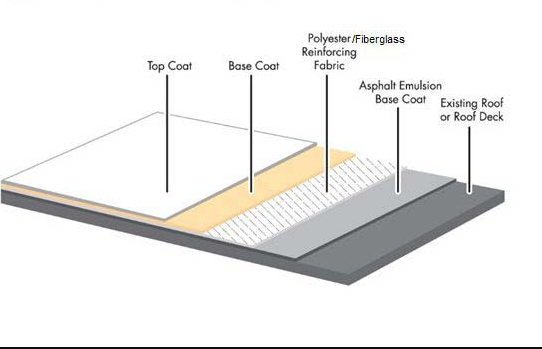
Modified Bitumen Roofing is a modern evolution of BUR, incorporating polymer modifiers to enhance performance. This type of roofing is known for its flexibility and strength, making it a popular choice for flat roofs.
Pros:
- Enhanced flexibility for temperature variations.
- Resistant to UV rays and weathering.
- Installation is relatively quicker than BUR.
Cons:
- Can be more expensive than traditional BUR.
- Requires professional installation.
EPDM (Ethylene Propylene Diene Monomer) Roofing

EPDM Roofing is a synthetic rubber membrane widely used for flat roofs. Its composition of ethylene, propylene, and diene monomer results in a durable and cost-effective solution.
Pros:
- Cost-effective and environmentally friendly.
- High resistance to UV radiation.
- Low maintenance requirements.
Cons:
- Susceptible to punctures.
- May require seam treatments for added protection.
TPO (Thermoplastic Olefin) Roofing

TPO Roofing has gained popularity for its energy-efficient and reflective properties. This single-ply roofing membrane is durable, lightweight, and resistant to punctures, making it a top choice for flat roofs.
Pros:
- Energy-efficient and reflective surface.
- Resistant to punctures and tears.
- Environmentally friendly and recyclable.
Cons:
- Vulnerable to certain chemicals.
- Professional installation is recommended.
PVC (Polyvinyl Chloride) Roofing
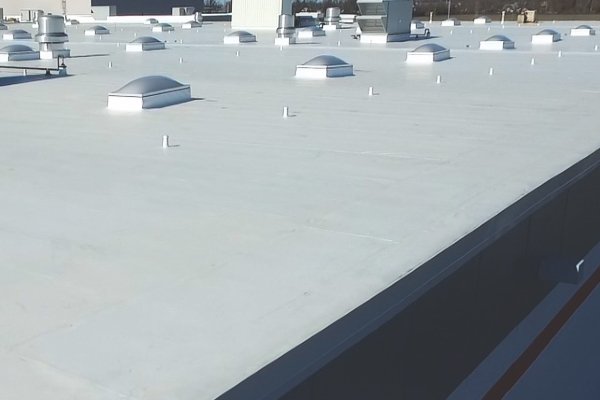
PVC Roofing is a durable and chemical-resistant option suitable for various applications. The heat-welded seams contribute to its watertight integrity, ensuring a secure roofing system.
Pros:
- Excellent chemical resistance.
- Durable and long-lasting.
- Watertight seams prevent leaks.
Cons:
- Relatively higher installation cost.
- Not suitable for roofs with high-temperature exposure.
Frequently Asked Questions
Are flat-top roofs suitable for residential homes?
Flat-top roofs are indeed suitable for residential homes, offering a modern and sleek aesthetic. However, it’s essential to consider factors such as climate, maintenance, and local building codes when choosing the right type.
How often should I inspect and maintain my flat top roof?
Regular inspections and maintenance are crucial for the longevity of flat-top roofs. It’s advisable to conduct inspections at least twice a year and address any issues promptly to prevent major repairs.
What is the average lifespan of flat-top roofs?
The lifespan of flat-top roofs varies depending on the material used. Durable options like metal roofing can last 40 years or more, while others, like roll roofing, may have a shorter lifespan of 10–20 years.
Are green roofs suitable for all climates?
Green roofs are versatile but may require additional considerations in extreme climates. Proper insulation and drainage systems are crucial to ensuring the success of green roofs in regions with harsh weather conditions.
Can I walk on a flat roof?
The ability to walk on a flat-top roof depends on the type of roofing material. While some materials like metal and PVC provide sufficient strength, others, like foam roofing, may not be suitable for heavy foot traffic.
Conclusion
In conclusion, the world of flat-top roofs offers a plethora of options to suit various needs and preferences. Whether you prioritize durability, energy efficiency, or environmental sustainability, there’s a perfect flat roofing solution for you. Consider the unique features and pros and cons of each type, and consult with roofing professionals to make an informed decision. The longevity and performance of your flat top roof depend on the right choice, so choose wisely.











